Inspire 2020: Teachers
The Fitzwilliam Museum, Cambridge and AccessArt bring you Inspire 2020 celebrating and supporting the creative journeys and processes of both children and their teachers developed throughout the project in 2019.
Artworks created by children will be seen in an exciting exhibition of children’s art curated by The Fitzwilliam Museum in 2020; Inspire 2020!
Find out everything about Inspire 2020 here.
Introduction

Modelled on the National Gallery, London’s, Take One Picture, Inspire 2020, will take a deeper look at one painting from the Fitzwilliam Museum Collection, and from there encourage individual interpretations, discoveries and journeys to be made.
This post is based on CPD (Continued Professional Development) sessions in February and March 2019, hosted and delivered by the Fitzwilliam Museum, Cambridge in collaboration with AccessArt, for Cambridgeshire teachers participating in Inspire 2020 Project.
“It was amazing!!! Inspirational ladies leading the course and fantastic resources. Possibly the best CPD I have participated in 20 years of teaching. Thank you SO much!!” Participating Teacher, Inspire 2020 session, 6th February 2019
Studio Introduction
The day started in the studio with Kate Noble introducing the Inspire 2020 project, its aims and objectives and revealing our focus object – The Story of Cupid and Psyche by Jacopo del Sellaio, an Italian painter who trained with Sandro Botticelli in Florence, Italy in the 1400s.
Kate set the scene by putting Sellaio’s painting into historical and cultural context, describing how it was made and why and then beautifully telling the story it depicts.

Although the painting now hangs on a wall in the Fitzwilliam Museum, Cupid and Psyche is a panel from a wedding chest, painted in egg tempera on a wooden panel. The colourful panel is from a spalliera, a decorated back board that would either be mounted on the wall as a headboard or attached to a cassone marriage chest. The project team were excited to chose this object as a focus for the Inspire 2020 project because as well as being a beautiful, lyrical painting it also held a functional purpose as a built object, a piece of furniture from a Renaissance home. We hoped that this would allow for infinite possibilities, interpretations and starting points back in the classroom.
Find out more about the Story of Cupid and Psyche by Jacopo del Sellaio with “Talking Points: the Story of Cupid and Psyche“.
Kate’s introduction was followed by a drawing warm up led by Sheila Ceccarelli from AccessArt.

Participants used drawing prompts to take them on a sensory drawing journey aiming to boost confidence in drawing and using drawing as a tool for looking and being in the here and now.




You can download AccessArt Drawing Prompts here.
The Gallery Floor
Looking and Discussing
Armed with sketchbooks and pencils and knowledge about the focus painting, teachers then made their way up to the gallery to see the panel in situ.
Kate guided teachers in their looking with an opening question: ‘Does the panel look different in the real? Is it how you expected it to look?’


Participants were then invited to share ideas that had come to mind of how the painting might link to different areas of the curriculum.
Many interesting themes emerged; from study of classical Greek myths and classical architecture to themes around nature and growing, trees, weather, landscape, colour, materials, design, geographical settings, proportion, shapes, symmetry, story telling, perspective, pattern, textiles, the human figure, the role of women in home and marriage, angels, wings, wind, to name but a few.
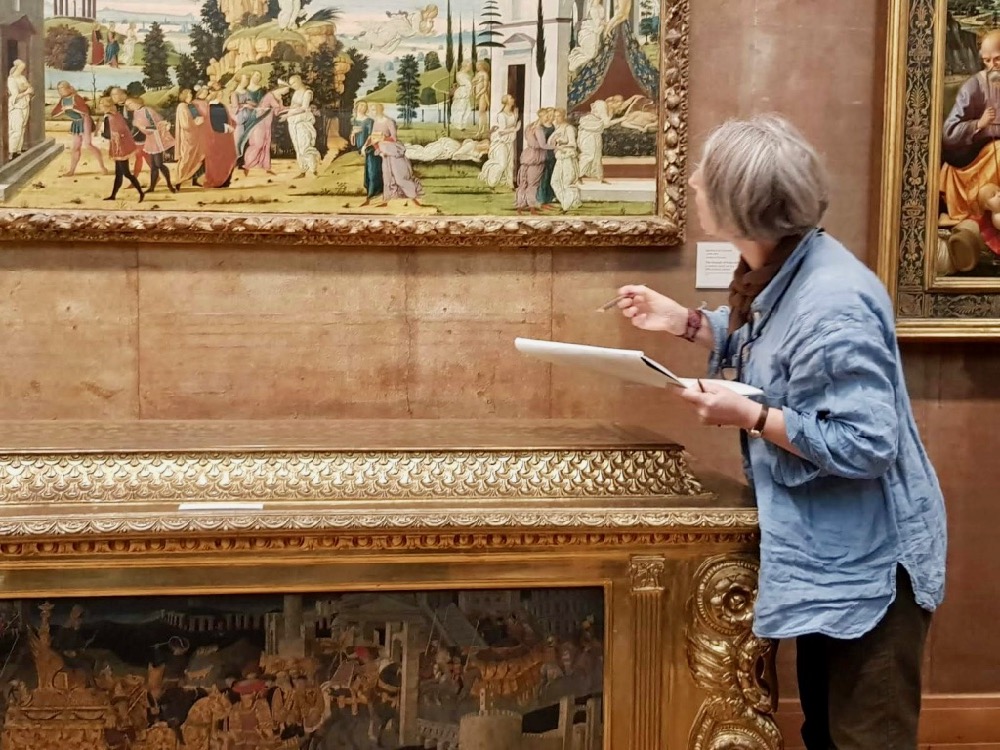
Collecting Thoughts and Ideas in Sketchbooks
Collage
Looking at the painting, we then used collage as a way of further exploring the panel.
Teachers tore coloured sugar paper into shapes to reflect on composition, elements of interest, perspective and general shapes seen in front of them. They then played with placement and composition on their sketchbook pages. The colours of the paper were selected to echo the soft, pastel colours within Sellaio’s panel.
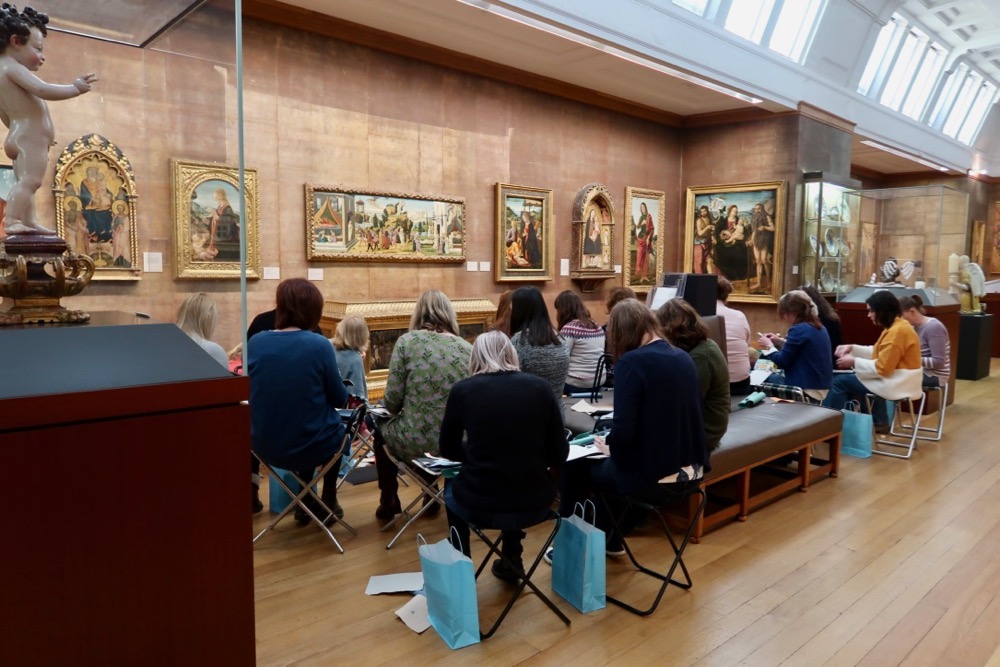






Making Notes and Annotating
All the time that teachers were on the gallery floor they were encouraged to be taking their own notes and take notice of their own ideas and connections that they were making in their own minds.
They were introduced to the idea of a sketchbook as a place to log, record, connect, imagine, write, draw and dream.

Drawing
Teachers were also encouraged to make visual notes and sketches.

Deep Looking and Using the Rest of the Museum to Find Your Theme

Using the French Impressionist painter, Claude Monet’s (1840–1926), Springtime, (1886), Kate took teachers on a journey of ‘Deep Looking’ to demonstrate how a playful and meditative exploration of a painting can allow the mind to wander deeply into the canvas. This process brings the painting to life – allowing time and space for looking to happen and ideas to emerge.
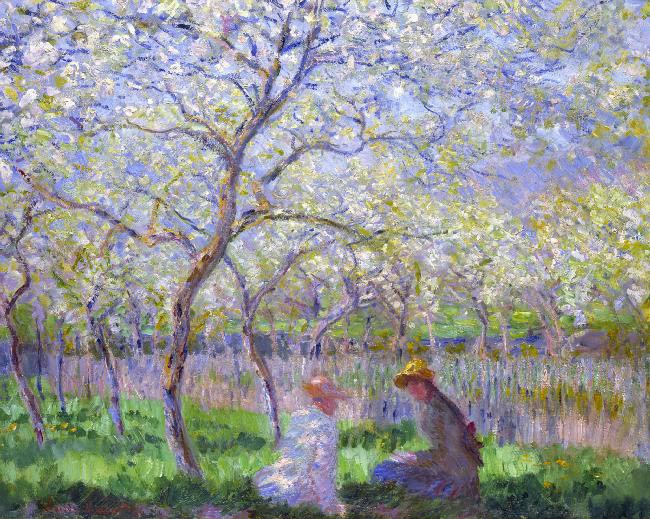
Sheila reminded teachers to continue to take notes and sketches of ideas that might have emerged from the exercise.
Teachers were then invited to explore the museum to find paintings, objects, architectural elements or sculptures which might support themes, ideas and subjects which had emerged in their own minds during the morning’s session.
Studio
Explorations
Using all the information, recordings and ideas gathered during the morning session, as a starting point, teachers were invited to explore materials and processes in the studio. It was hoped that these explorations would both stimulate their own curiosity and creativity but also support the development of art skills which they could take back into their classroom.
The studio was set up in three distinct areas.
Drawing and Collage
Here teachers were encouraged to expand on the ideas and drawings that they’d collected in their sketchbooks during the gallery session.
The tables were set up with a variety of different papers and drawing materials from chunky graphite sticks to Posca pens. Teachers were encouraged to be experimental and work in big A3 sketchbooks or bigger and to move ideas forward.
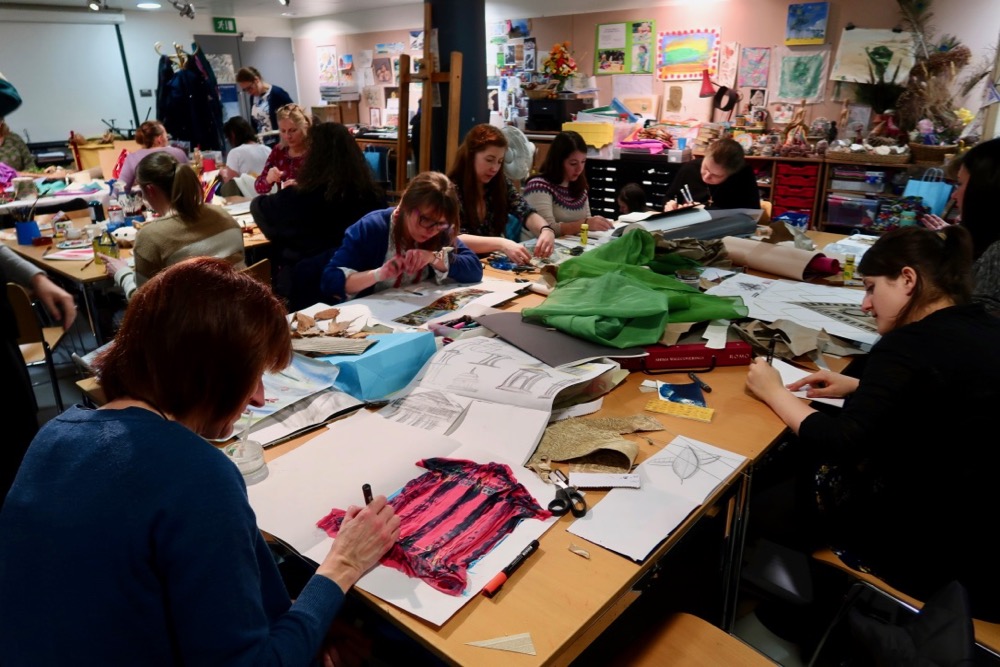







Colour
A ‘colour table’ was set up with a variety of different painting mediums and primed wooden pieces for teachers to experiment on.
We were very fortunate to be joined by Ali a studio artist who works at the Fitzwilliam, who was able to share her knowledge of egg tempera and painting on a wooden panel.
Ali prepared powder paints and an egg yolk for teachers to play with mock-‘egg tempera’, as well as gouache colours, inks, Brusho and more. She also provided a variety of different surfaces on which to work from paper to papyrus and wood.





Making
A making table was set up with a variety of materials, mainly from the Cambridge Community Scrap Store and all ubiquitous and easily sourced including: fabric, wire, cardboard, mesh, film, clay, Modroc, hessian, foil, sticks, wooden rods, plasticine and more.
Teachers were encouraged to make playful explorations of the materials and explore how they might construct their own interpretations of ideas gathered from the morning’s session on the gallery floor.



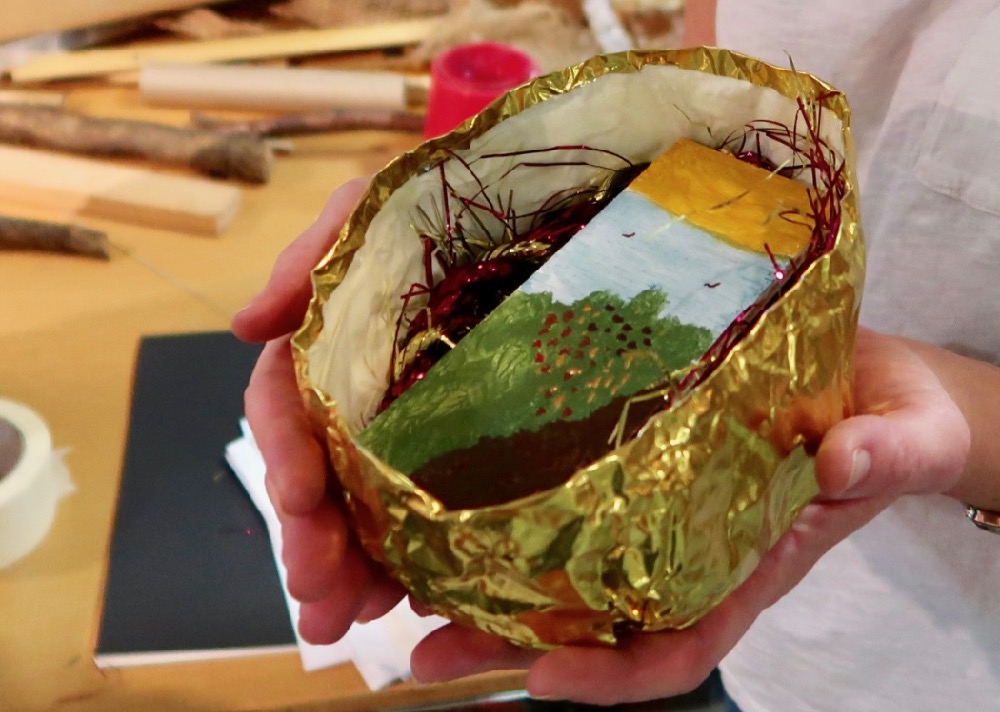
Looking at Talking
The session ended with a chance for all the teachers to see each other’s work and share their experiences of being in the studio.

Threading conversations back in to how ideas and processes might be taken back into the classroom and what scope there was for the bigger task at hand: facilitating meaningful creative experiences for the children.

Many thanks to the wonderful teachers who came to this CPD session for sharing their ideas and processes with AccessArt.
Many thanks to Alison Ayres, the Fitzwilliam Museum’s studio artist, for her support in the studio and sharing her knowledge and Holly Morrison for her consultation and in preparing materials for Inspire 2020 Project.
This post was written by Sheila Ceccarelli and edited by Kate Noble. Photos were taken by Paula Briggs and Sheila Ceccarelli.

